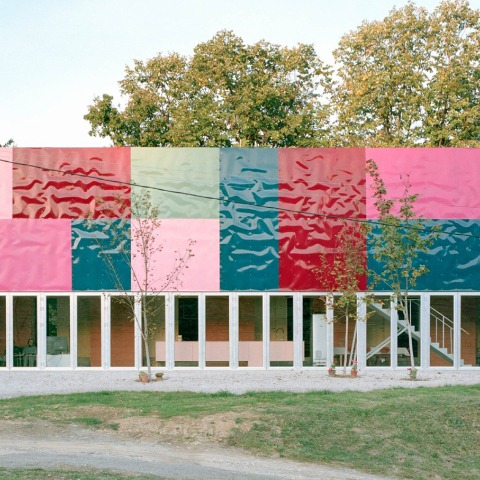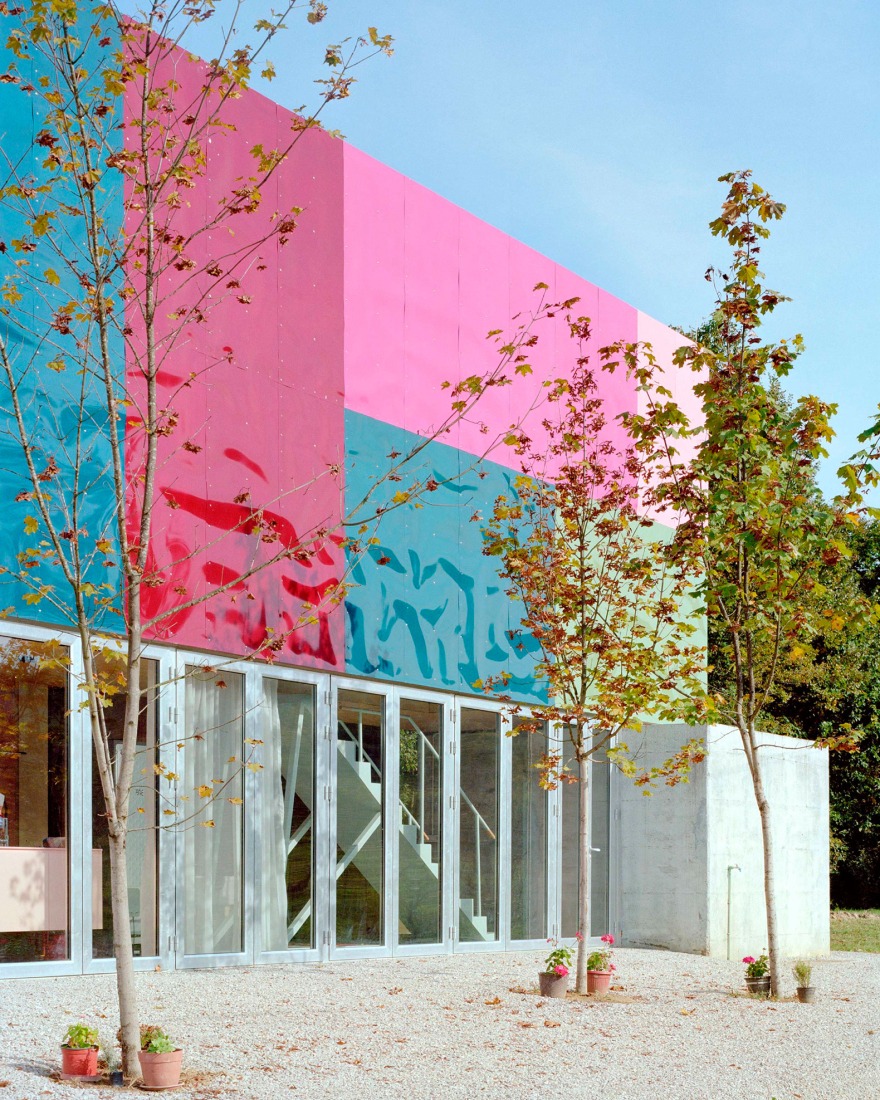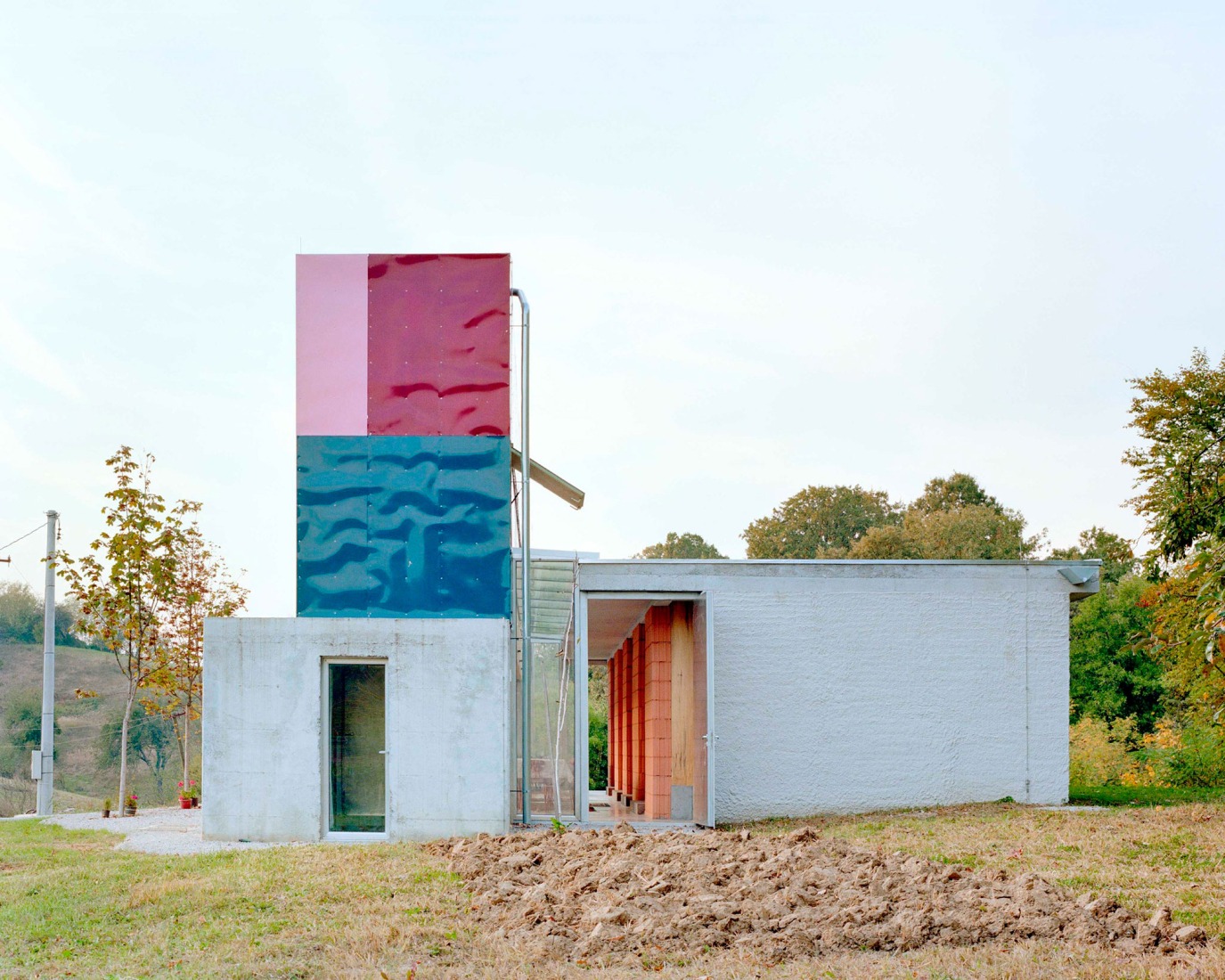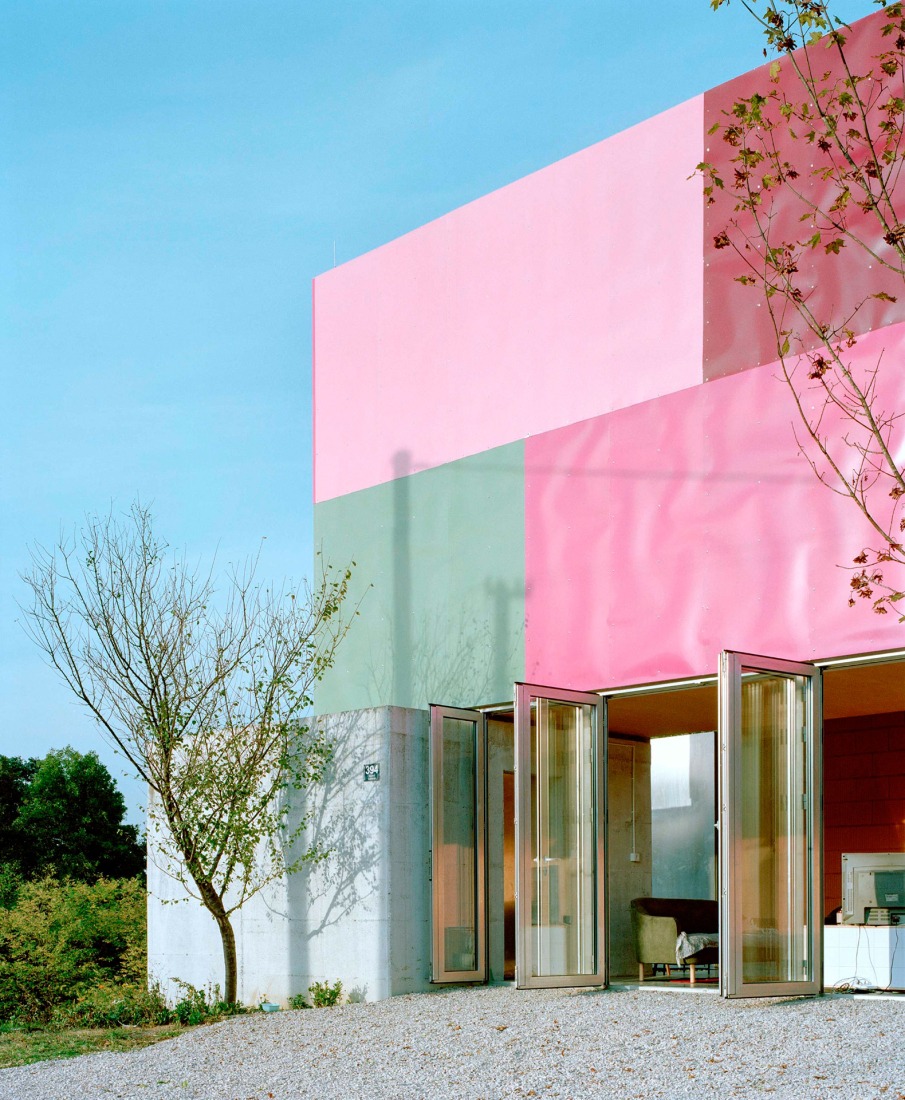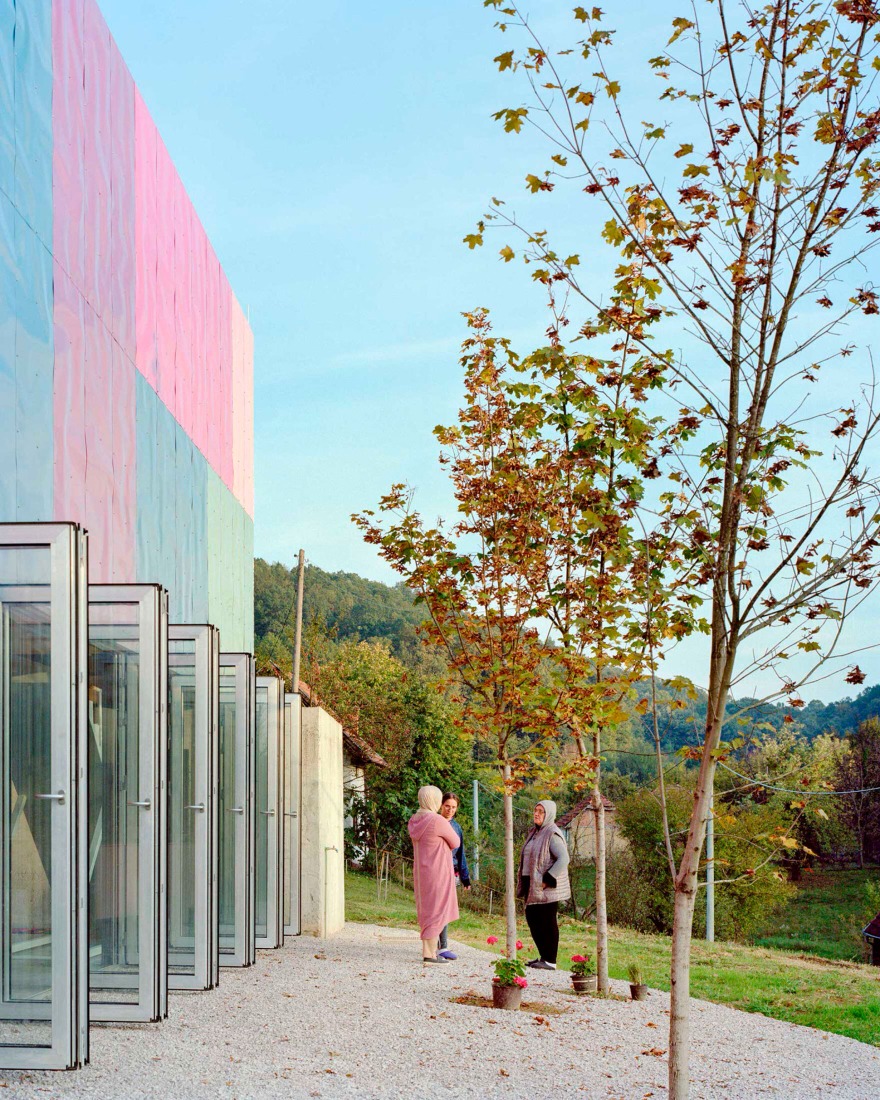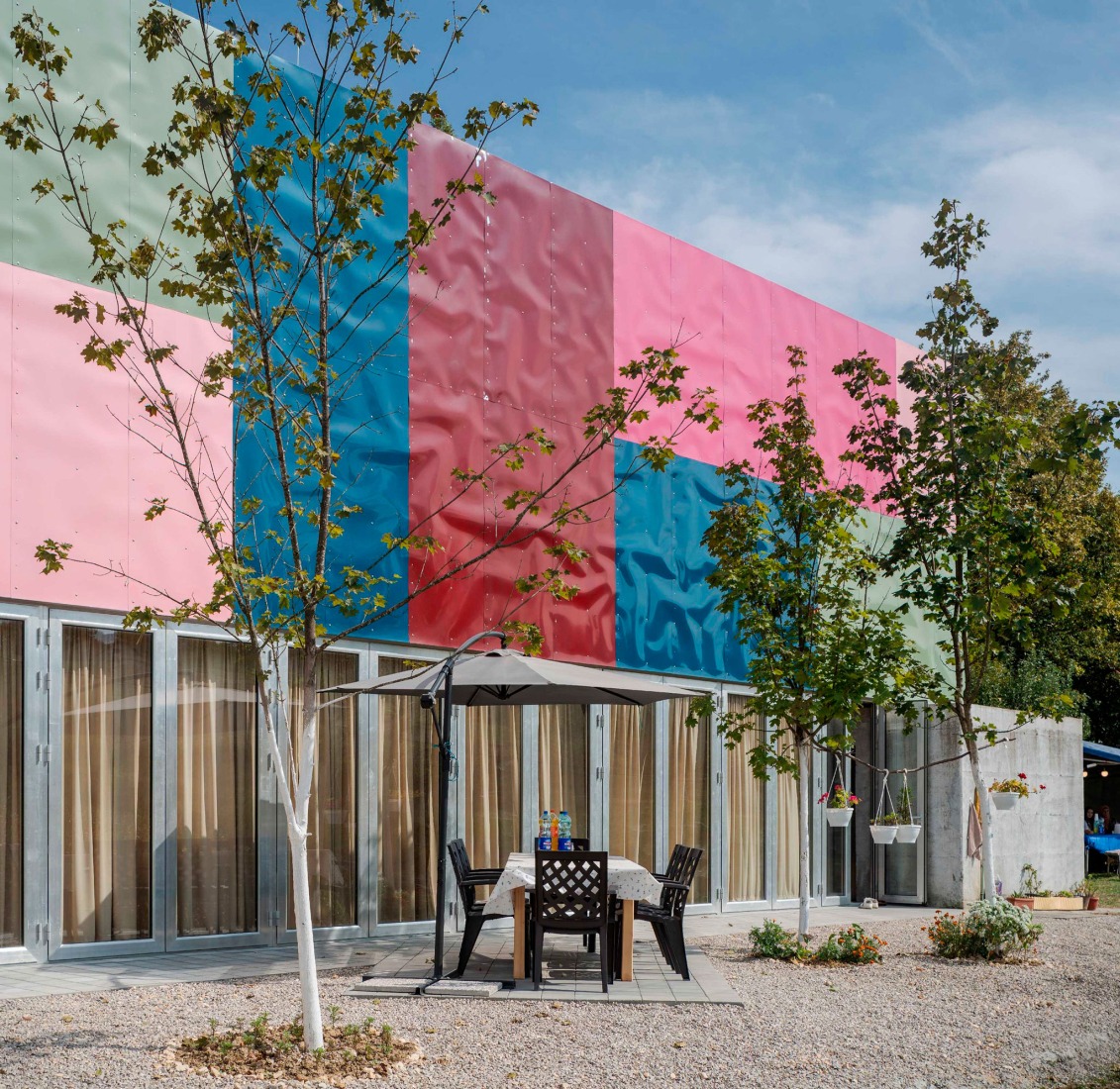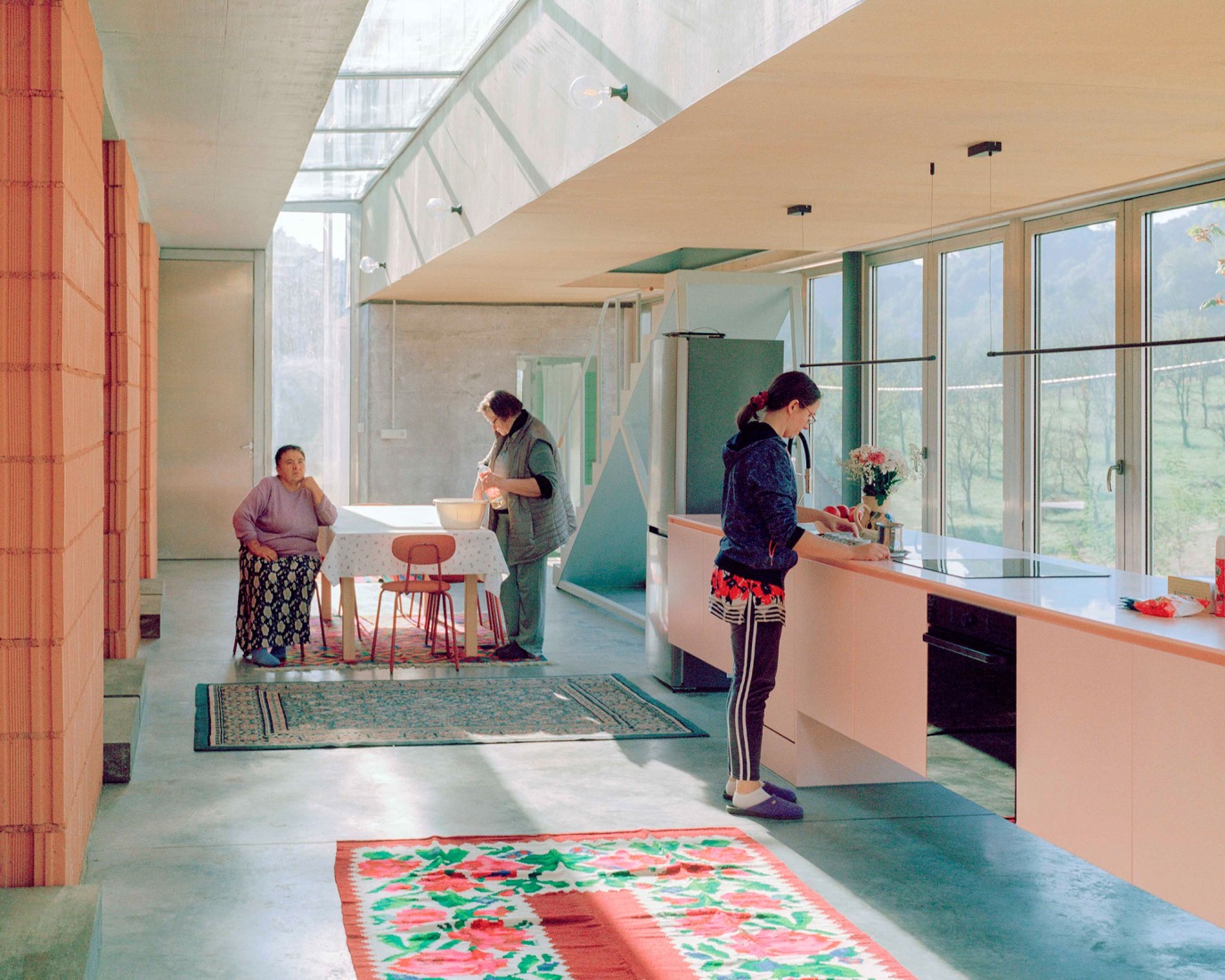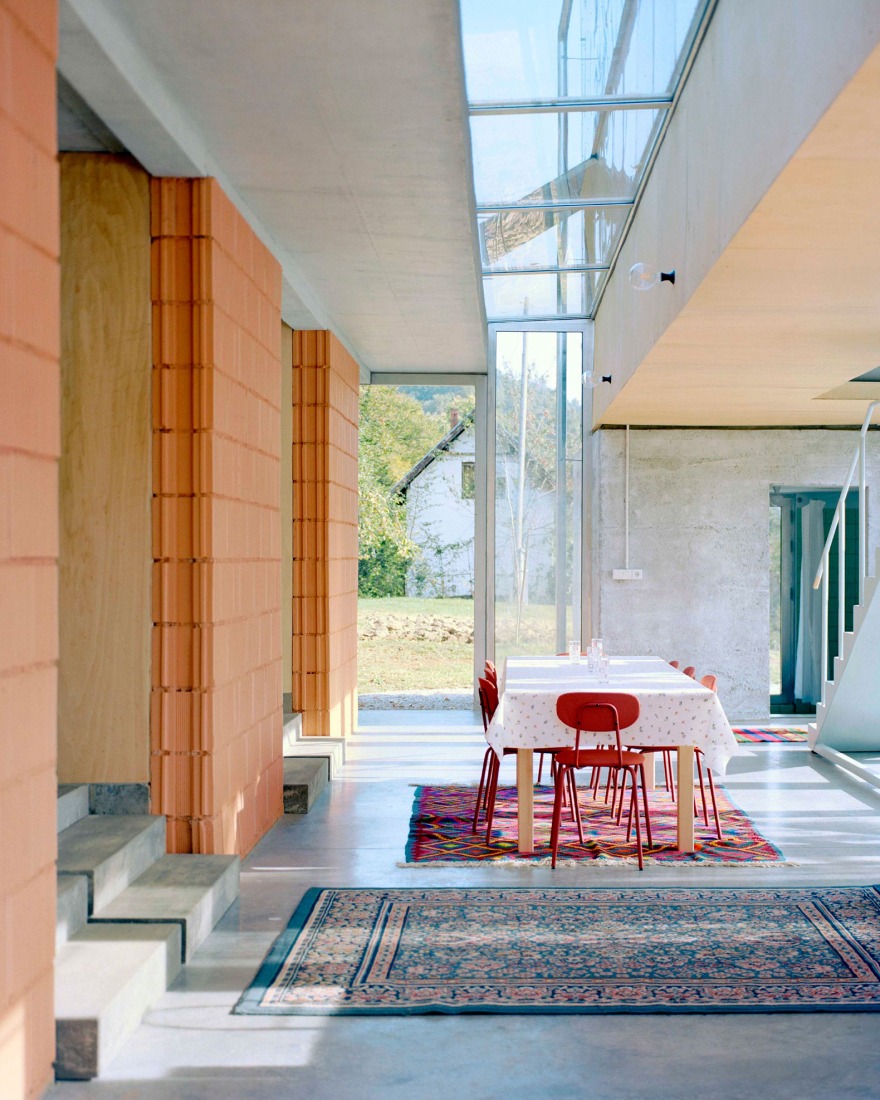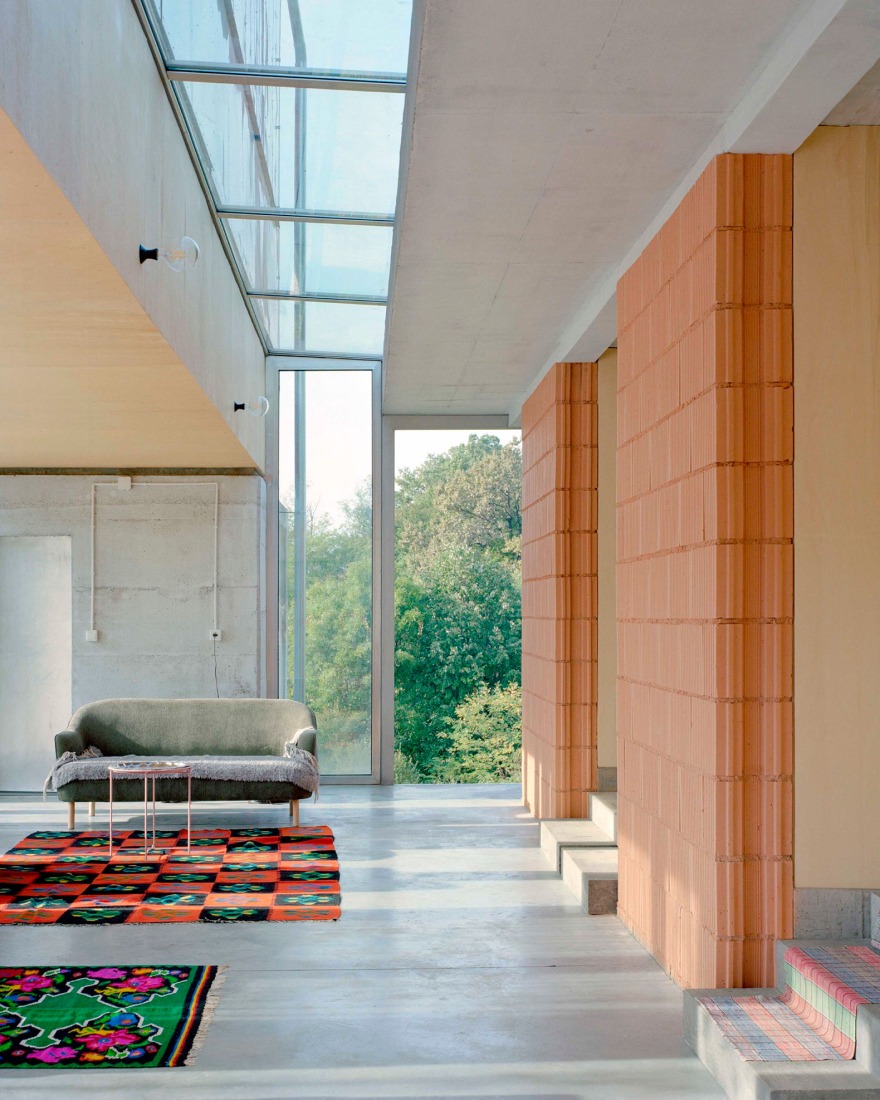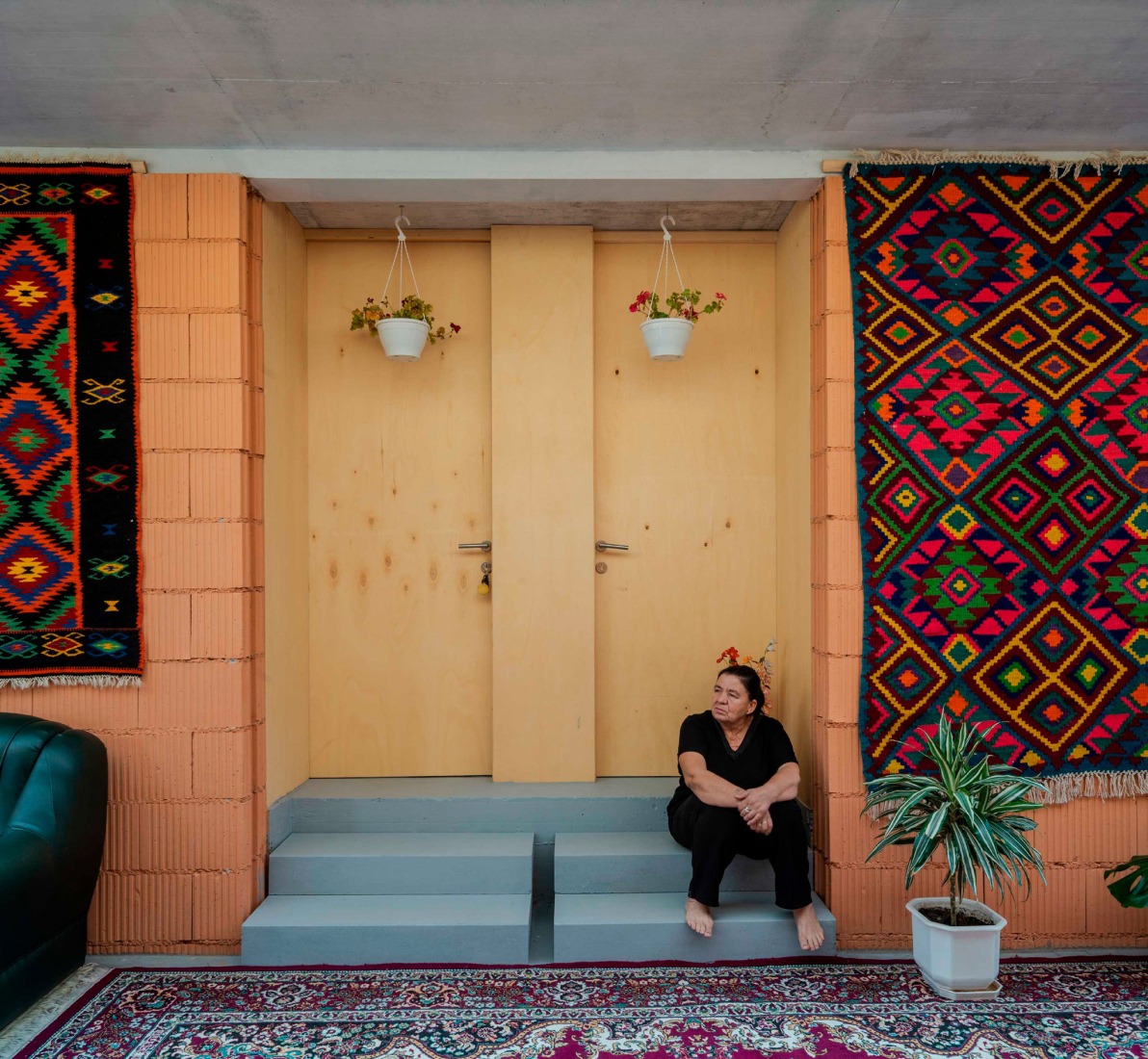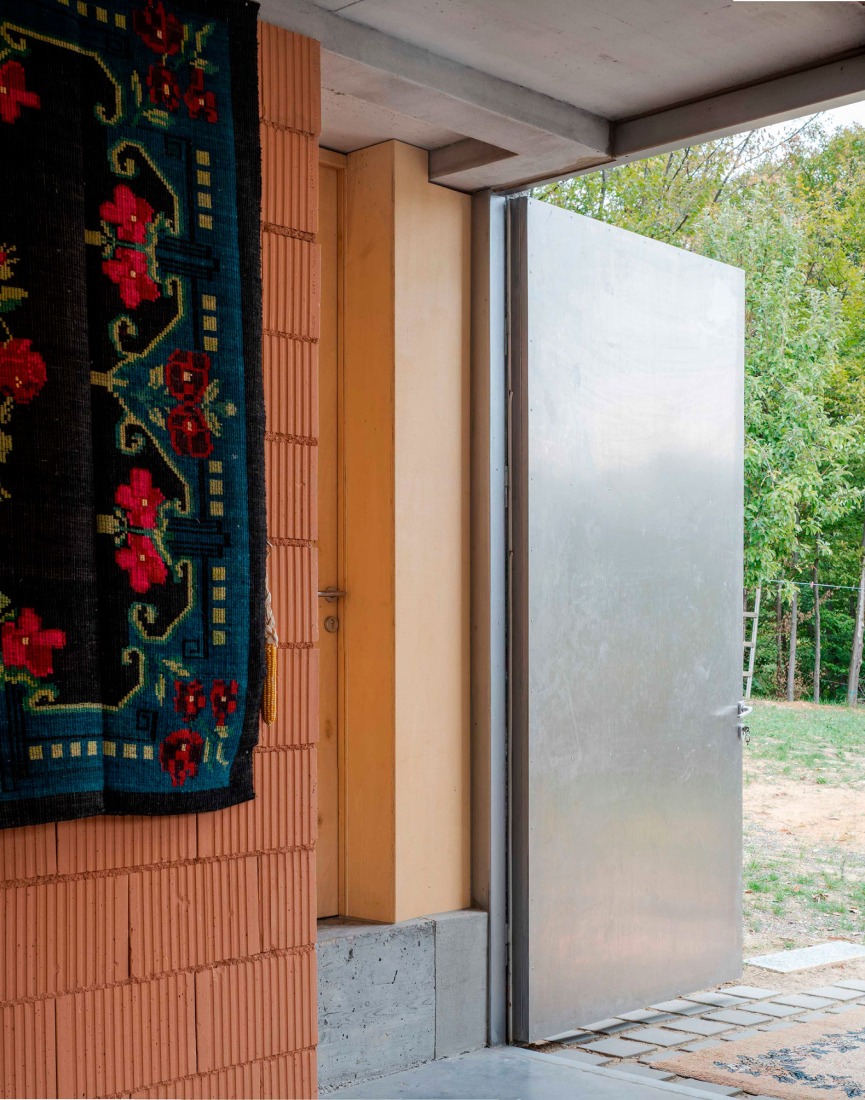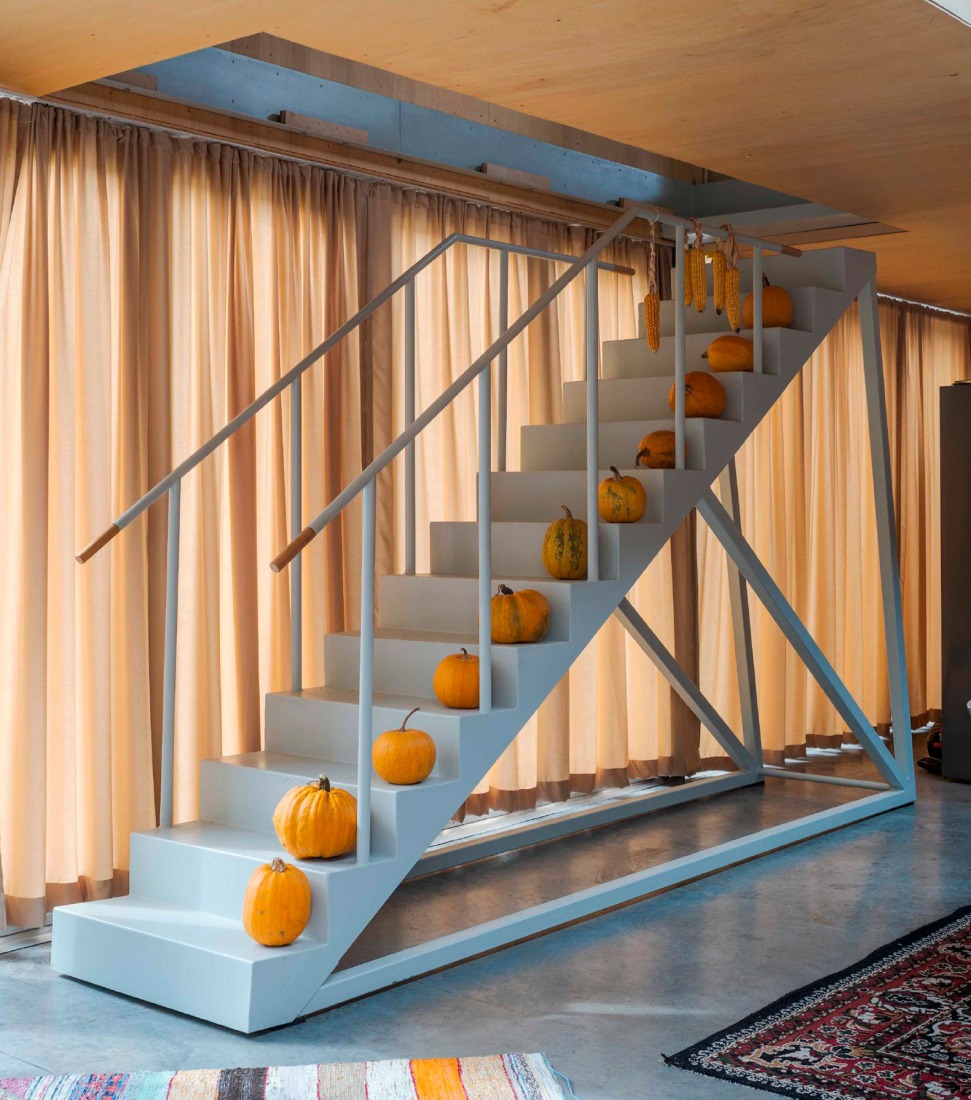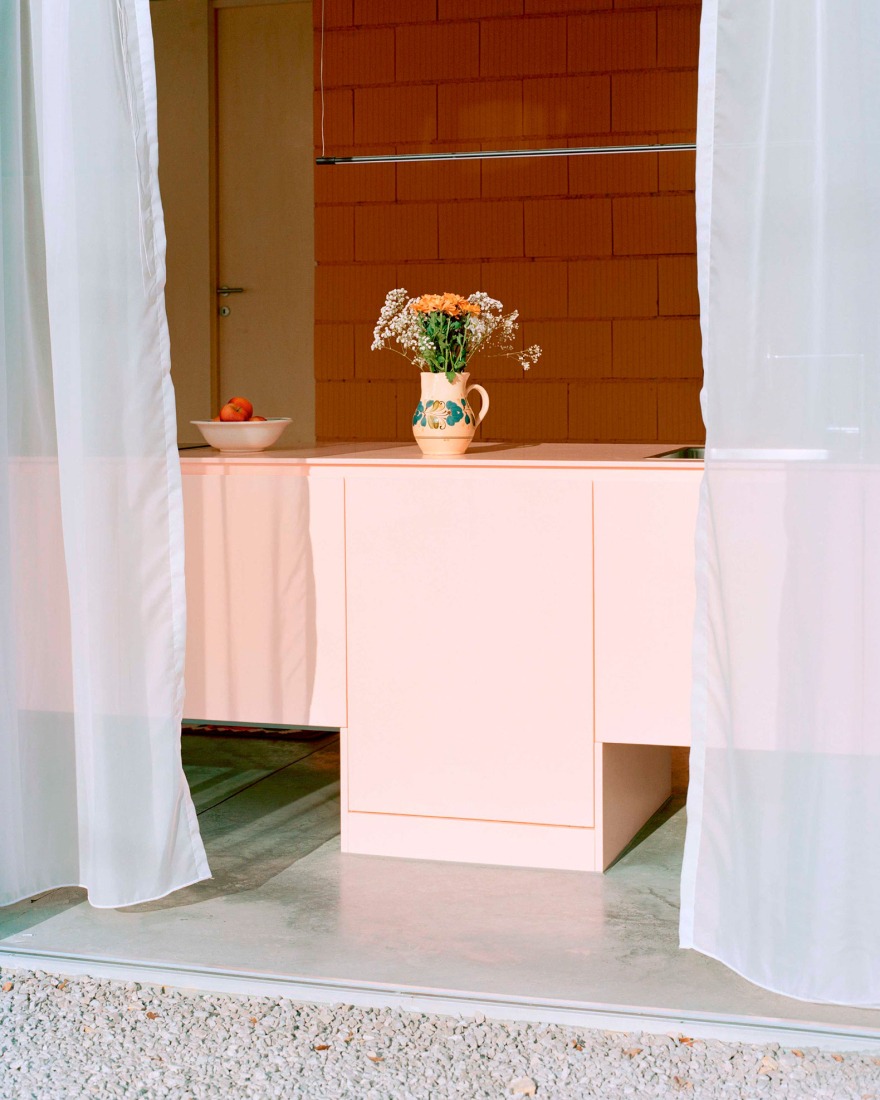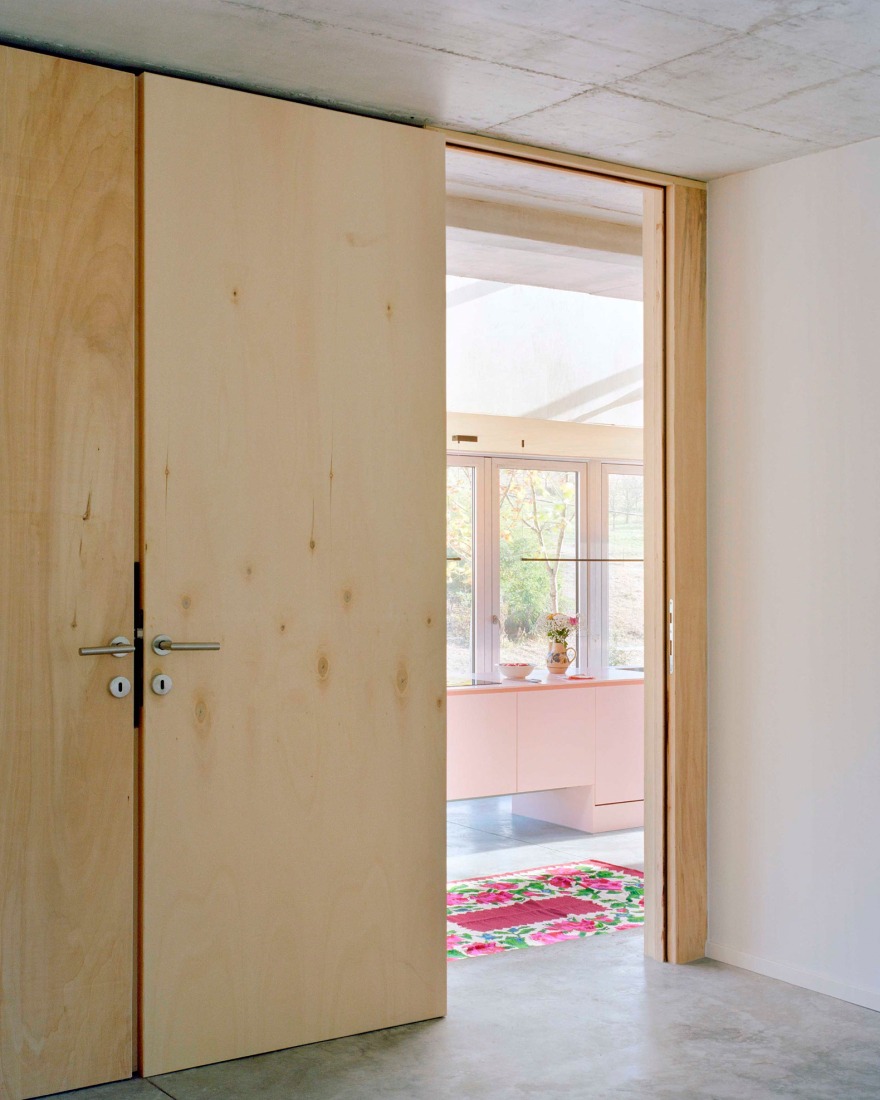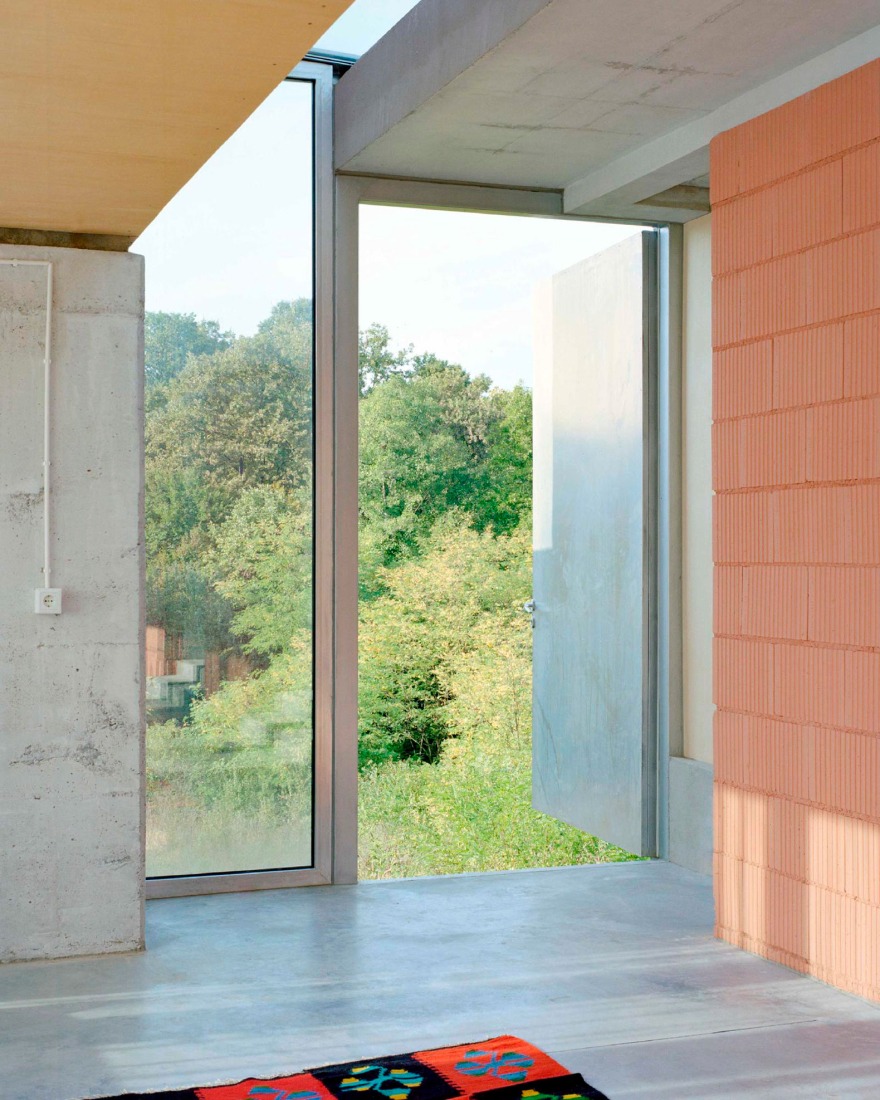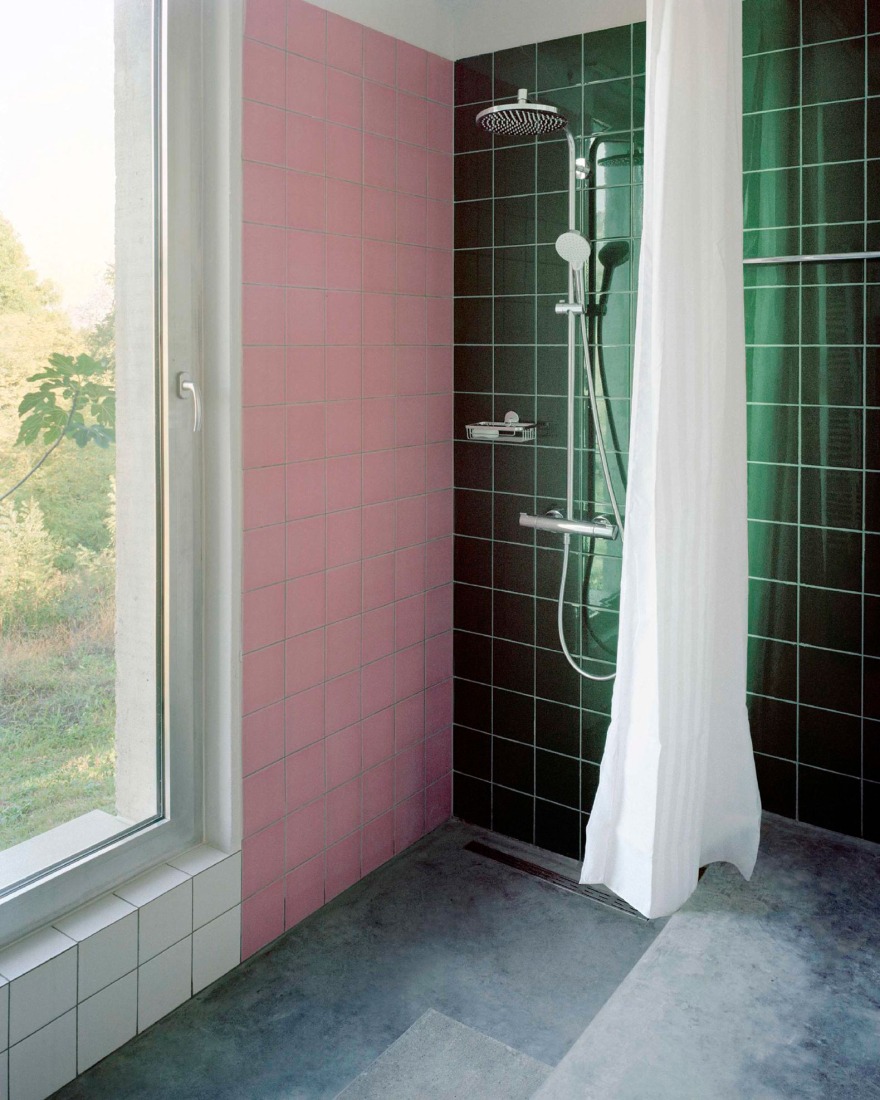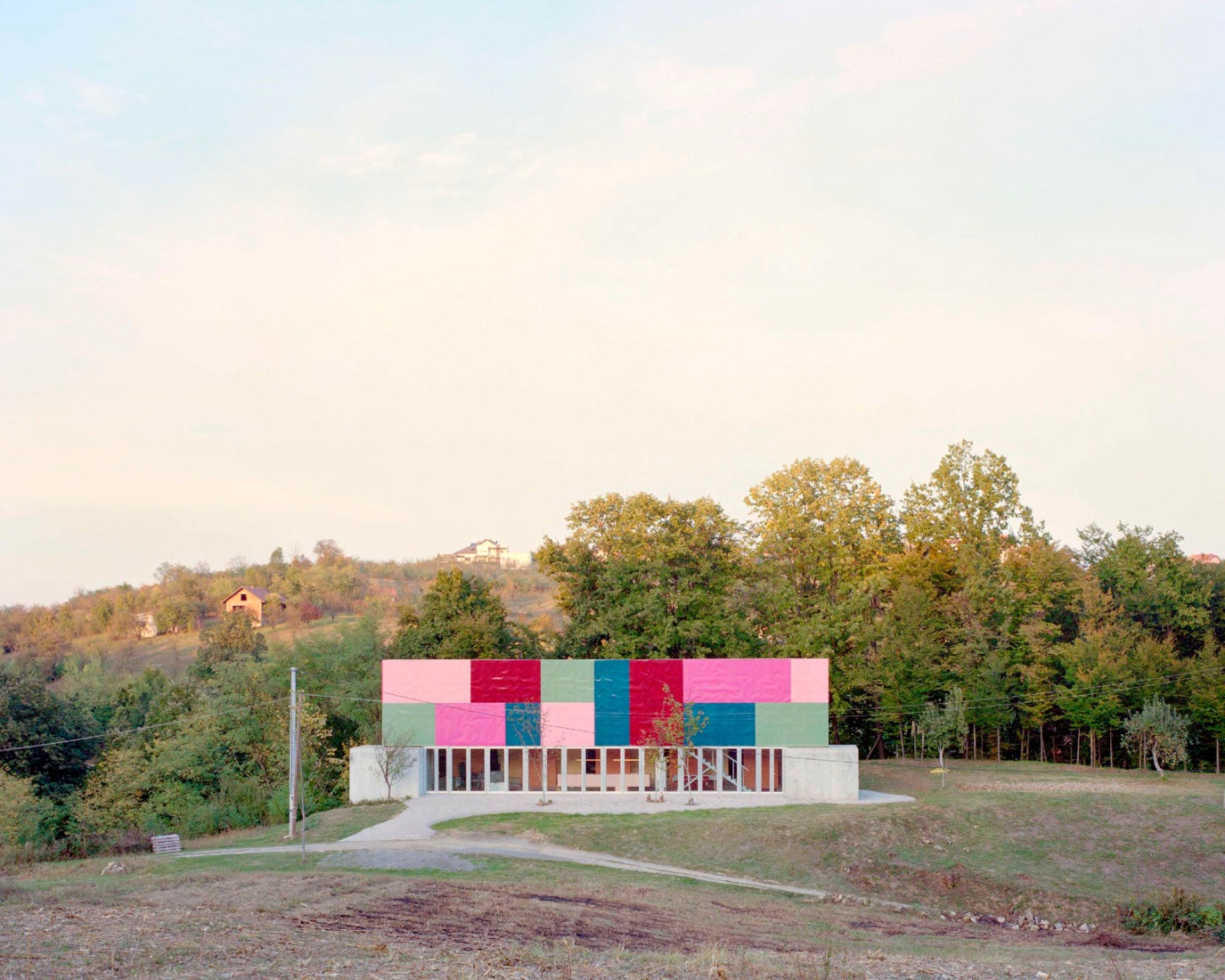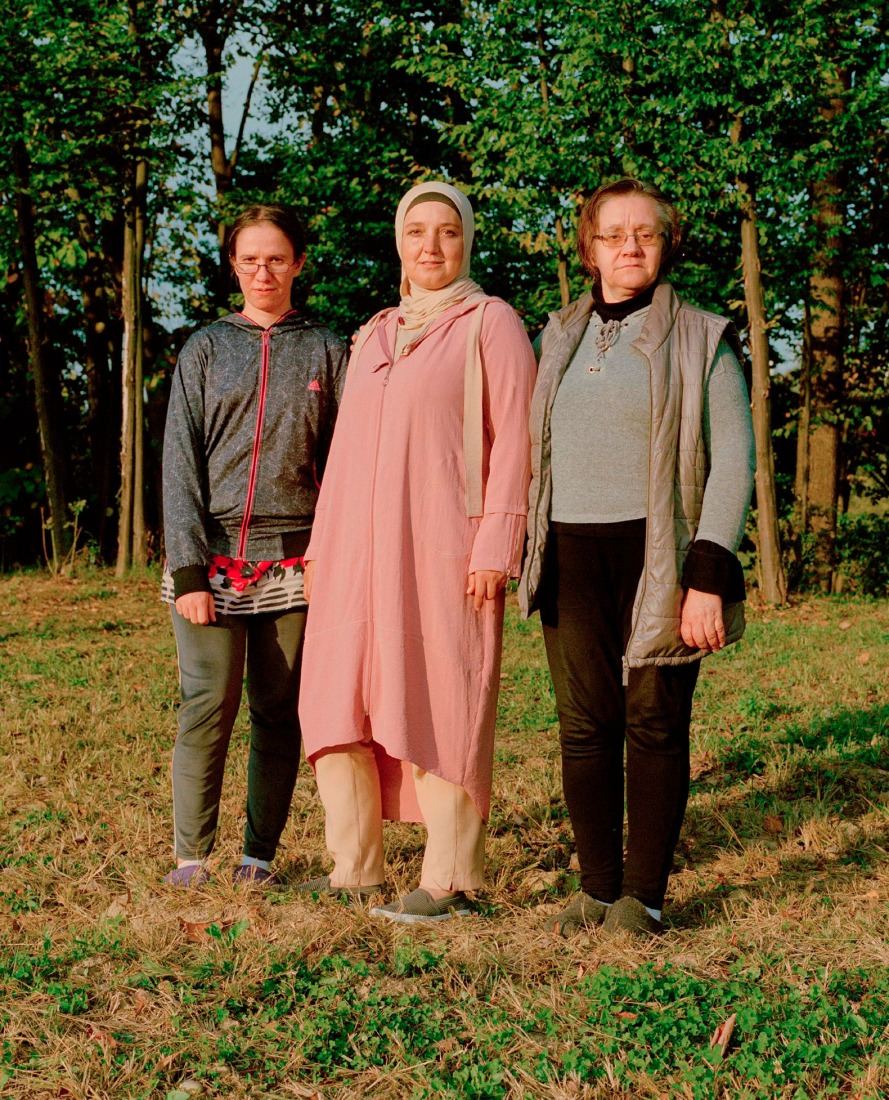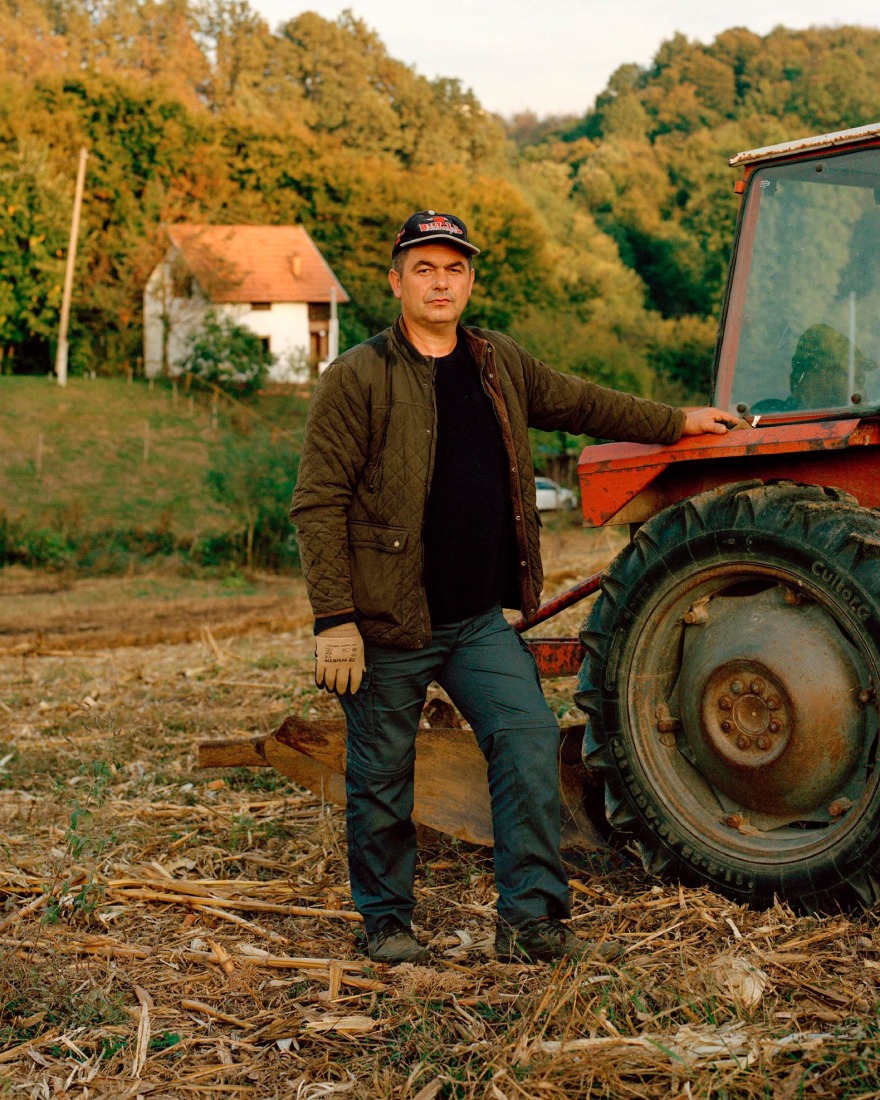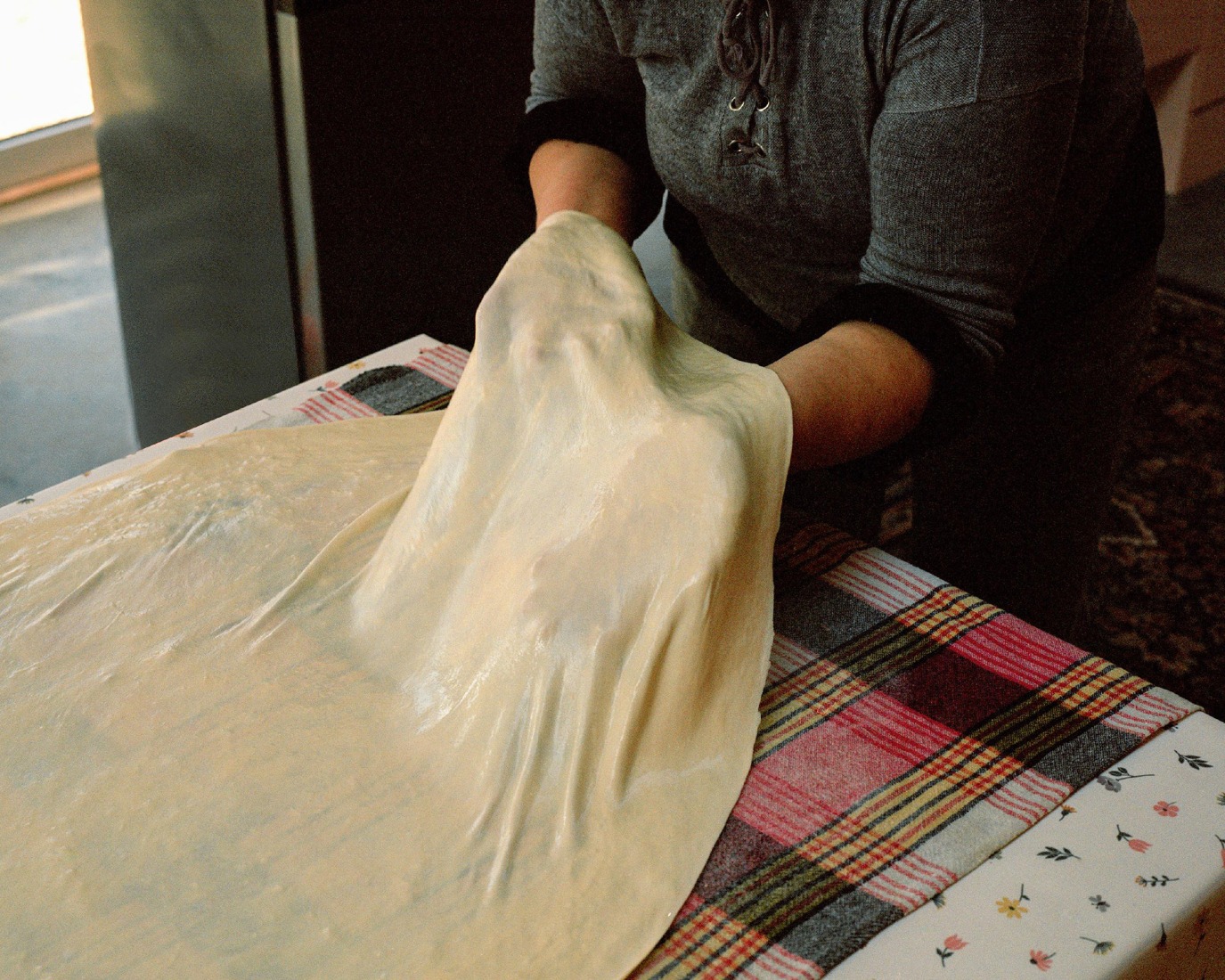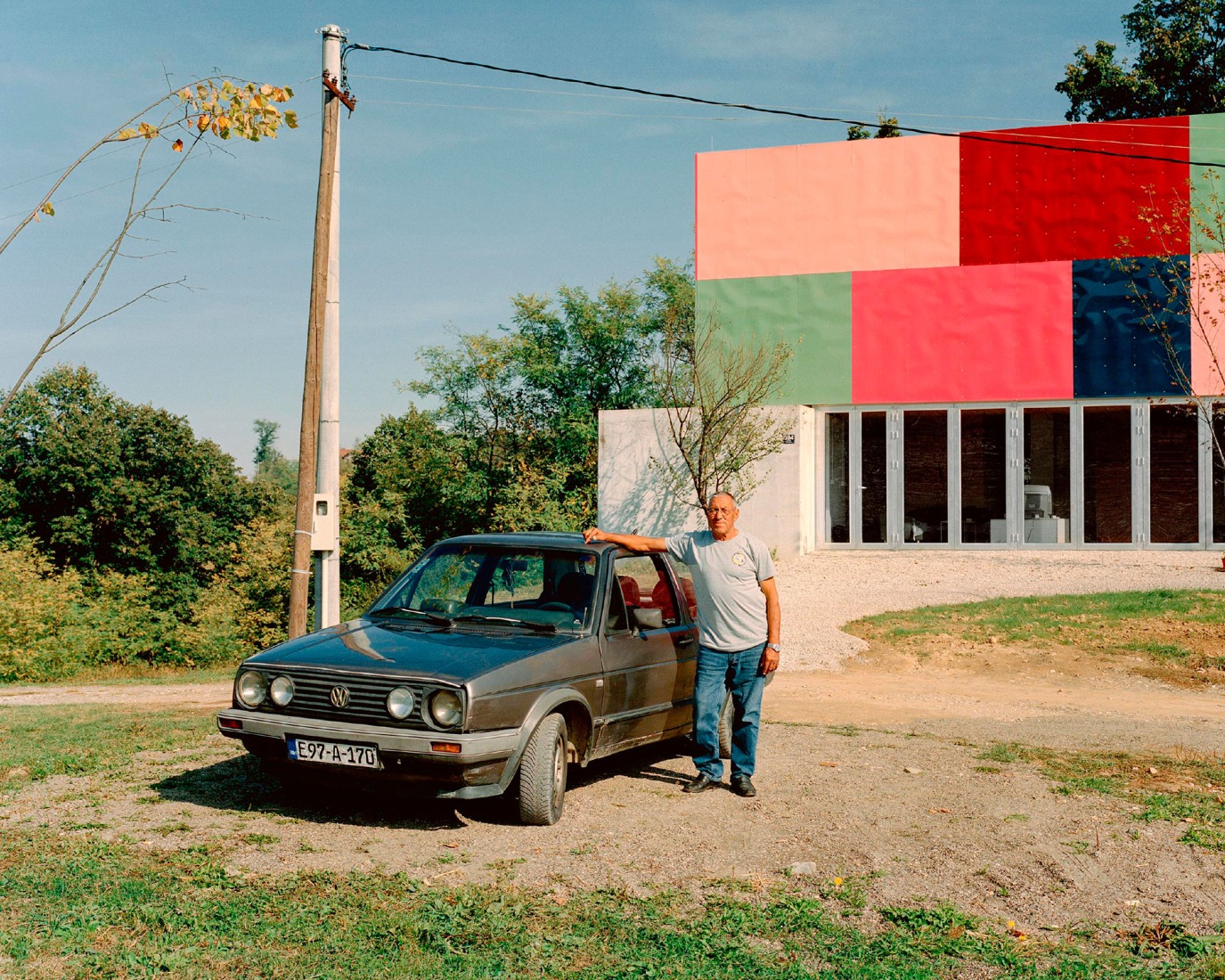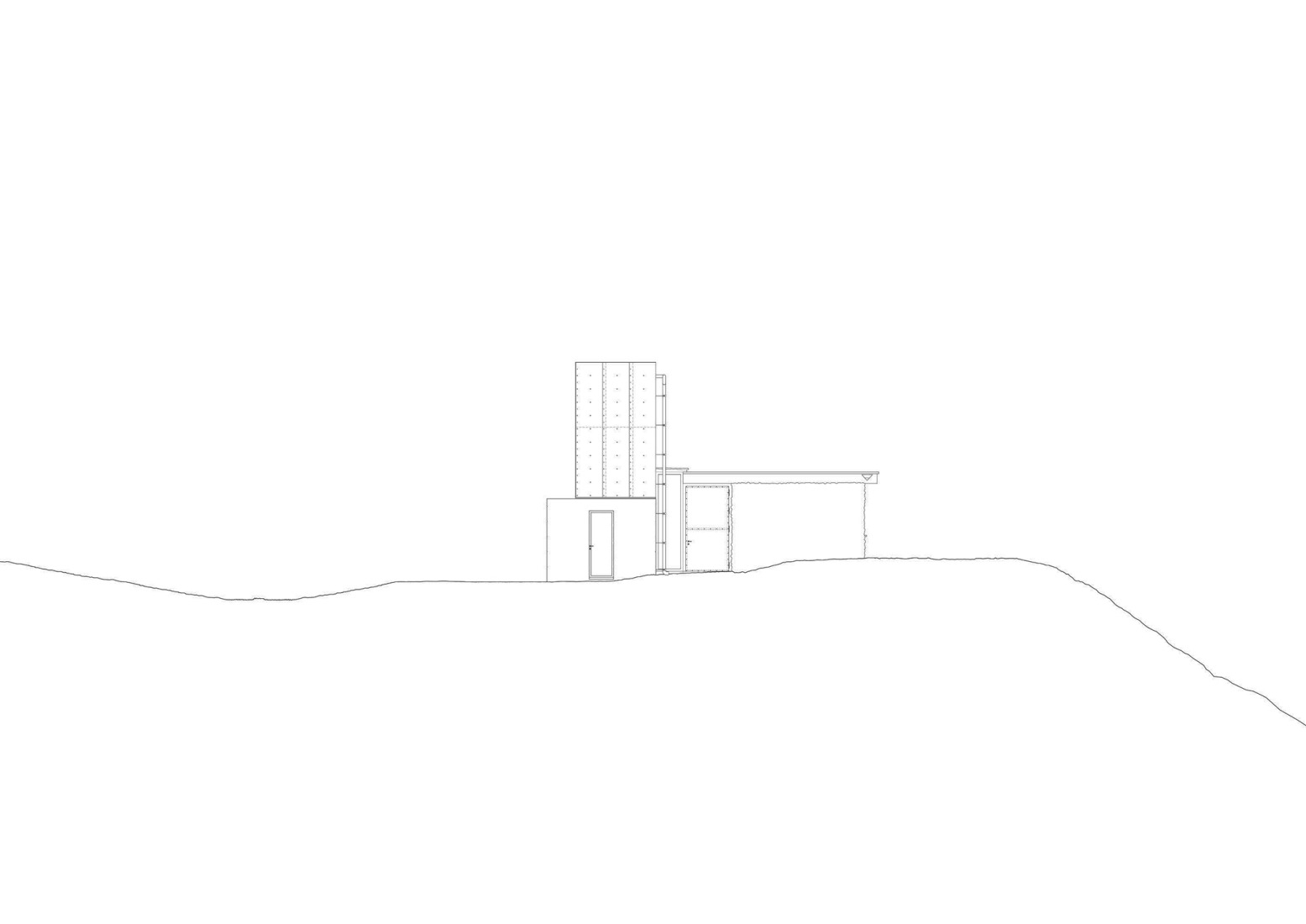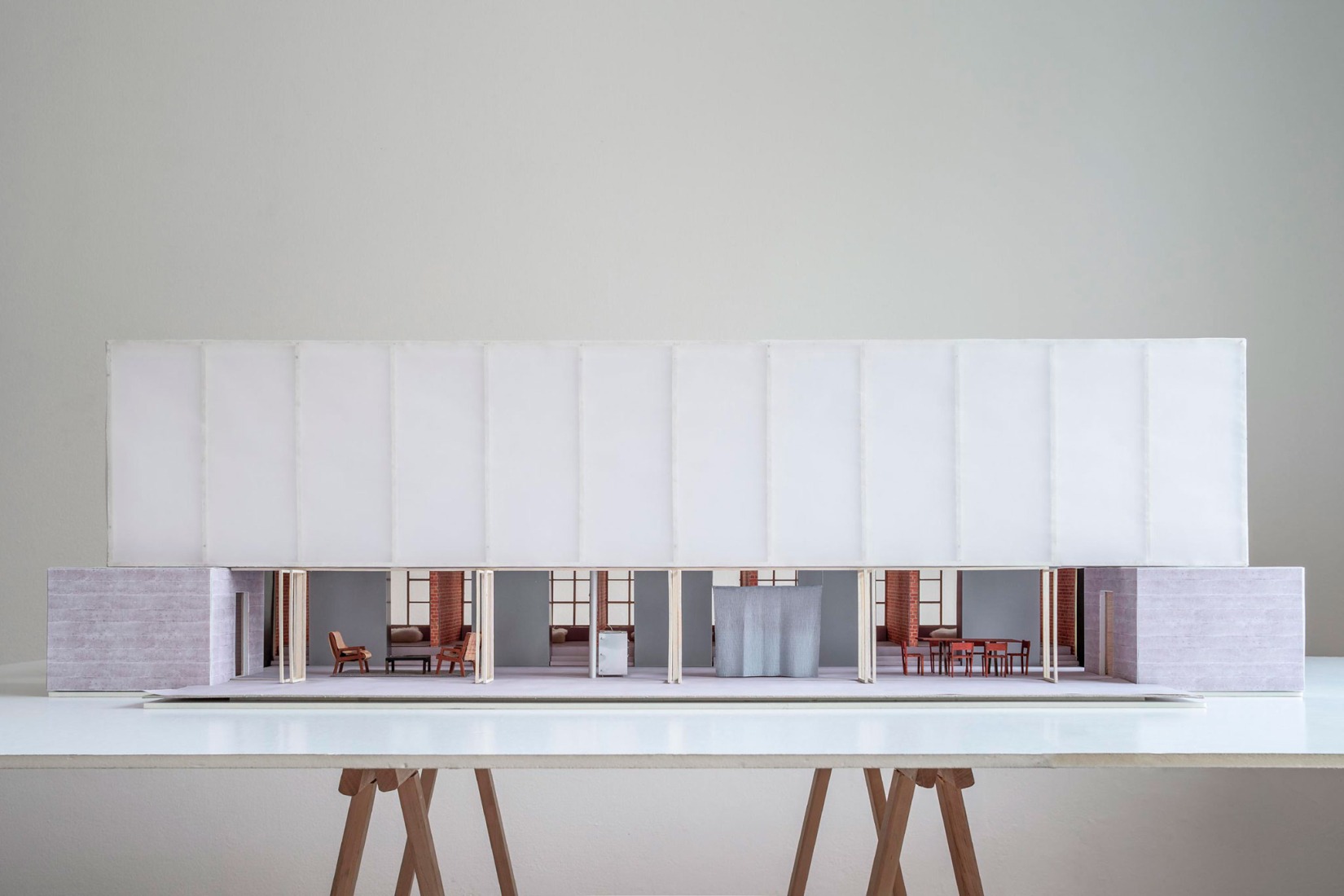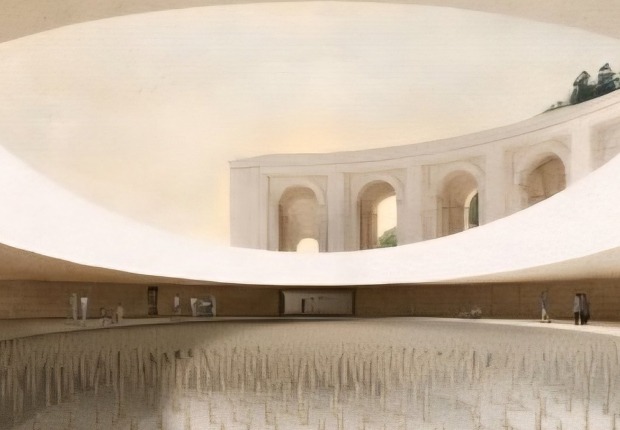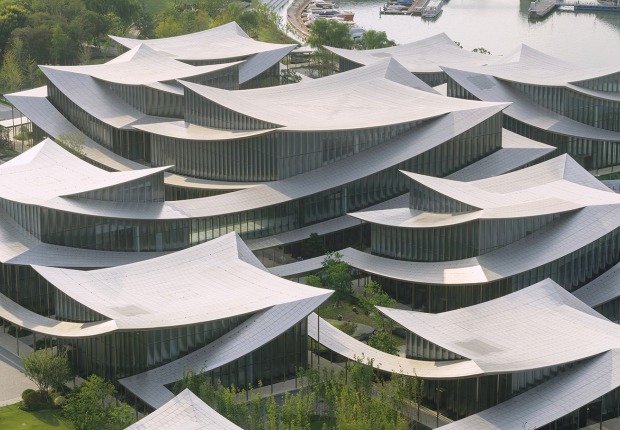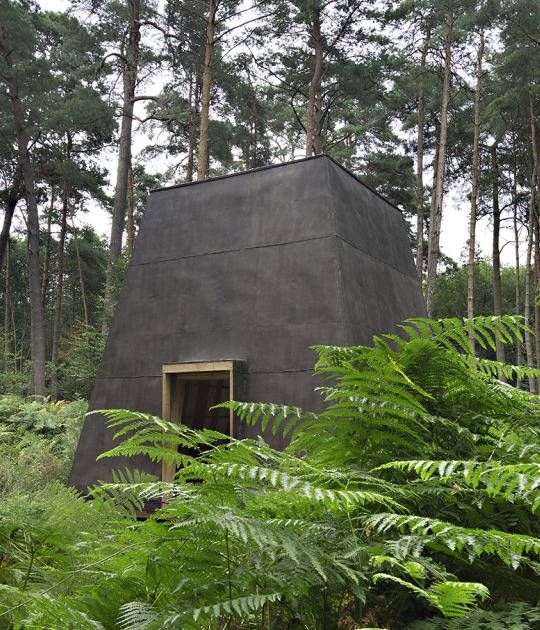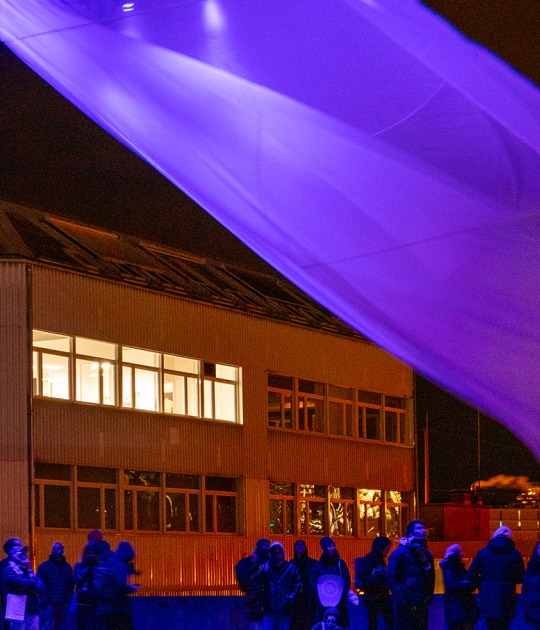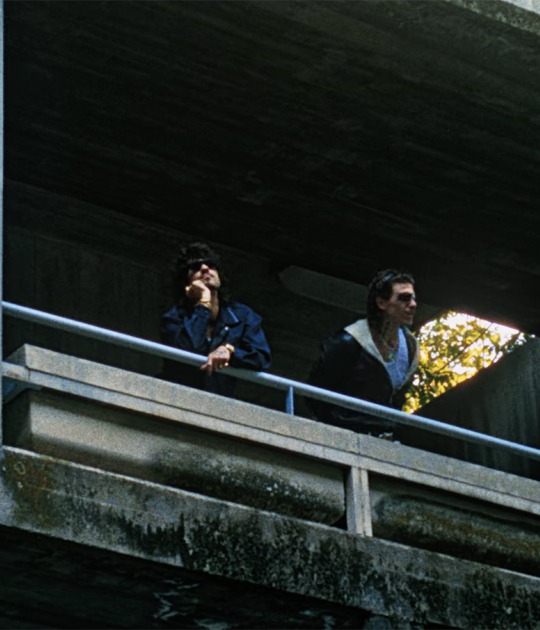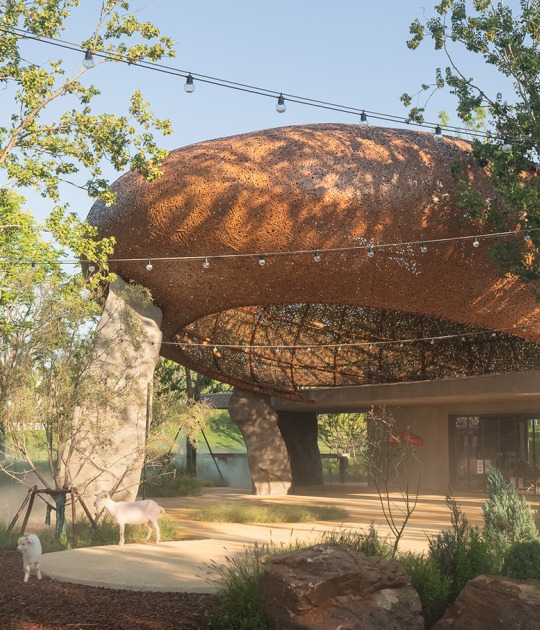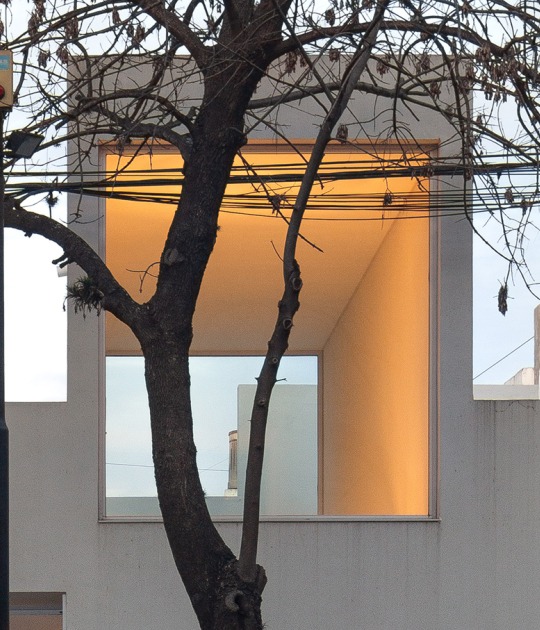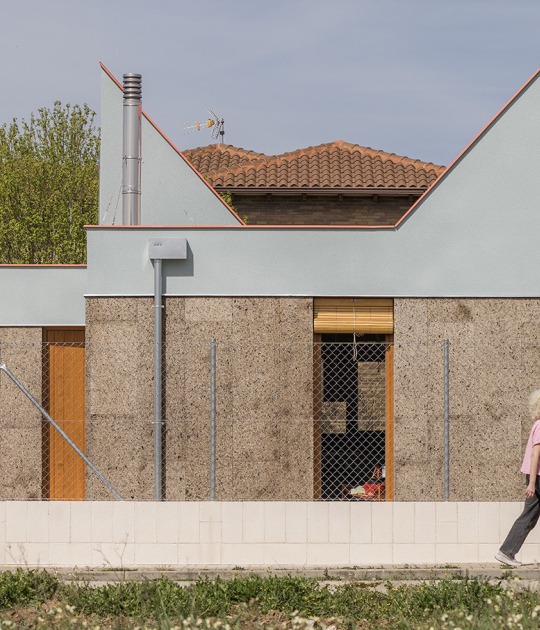
The proposal for the House for Five Women began seven years ago, drawing on Hazima Smajlović's personal experiences, which inspired the collaboration between TEN Studio, the NGO Engineers Without Borders, the NGO Vive Žene, the municipality of Gradačac, and numerous individual collaborators. For its implementation, resources were donated, collected, and managed transparently through annual reports and decisions made by a responsible project committee.
Consideration of the project requirements and available resources was critical. The building is fully rooted in its local context, but its impact extends to the wider community. For its implementation, the project was built through on-site dialogue with local construction contractors: collaboration with local metalworkers, carpenters, car painters, carpet repairers, and other skilled workers was essential to establishing a culture of collaboration and visibility.
Outwardly, the large façade, designed by artist Shirana Shahbazi, appears as a tapestry of colors that constantly changes appearance. The twenty doors that open onto the street make the House for five women accessible and welcoming. Inside, the layout promotes both privacy and shared experiences. The recognition of individual needs, combined with mutual support and acceptance of each woman's personal history, makes this a place they can call home.
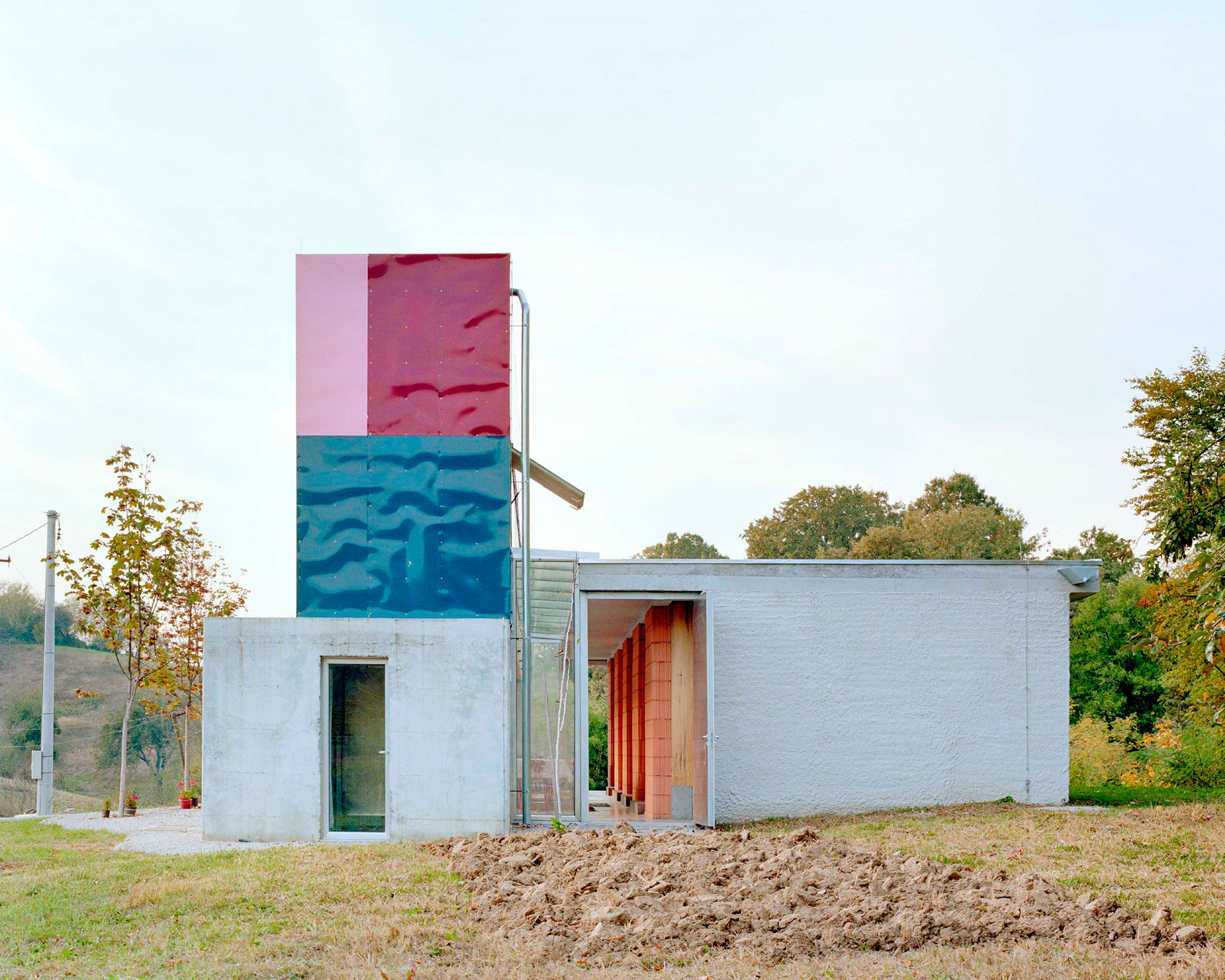
House For Five Women by TEN Studio. Photograph by Maxime Delvaux, Adrien de Hemptinne.
Project description by TEN Studio
The House for Five Women provides housing for women who have survived war, violence, and social injustice. Set in the countryside close to Gradačac, a small town in Bosnia and Herzegovina, the project offers a model for care, mutual support and community engagement. The house is based on the idea that individuals best grow and live together with self-determination and shared responsibility. The project seeks to go beyond prescriptive solutions. It fosters a culture rooted in its environment without dictating all the details, and allows identity to be reinvented daily.
The project began with Hazima Smajlović, whose personal experiences inspired a sevenyear collaboration between TEN, the NGO Engineers Without Borders, the NGO Vive Žene, the municipality of Gradačac, and many individual contributors. Resources for the project were gathered, donated, and secured over time through numerous individual contributions. The project team managed these resources transparently through annual reports and decisions made by an accountable project committee.

To fully understand the project's requirements and resources at hand was the first step of a design process. Design inherently involves making preferable choices, and these actions that shape reality are also shaped by the evolving dynamic and context.
Collaboration with local metalworkers, carpenters, car painters, carpet repairers, and other skilled individuals was essential in establishing a culture of collaboration and visibility, as well as defining the project's boundaries. Through its construction, the building is rooted in its local context, yet its impact extends to a broader community.
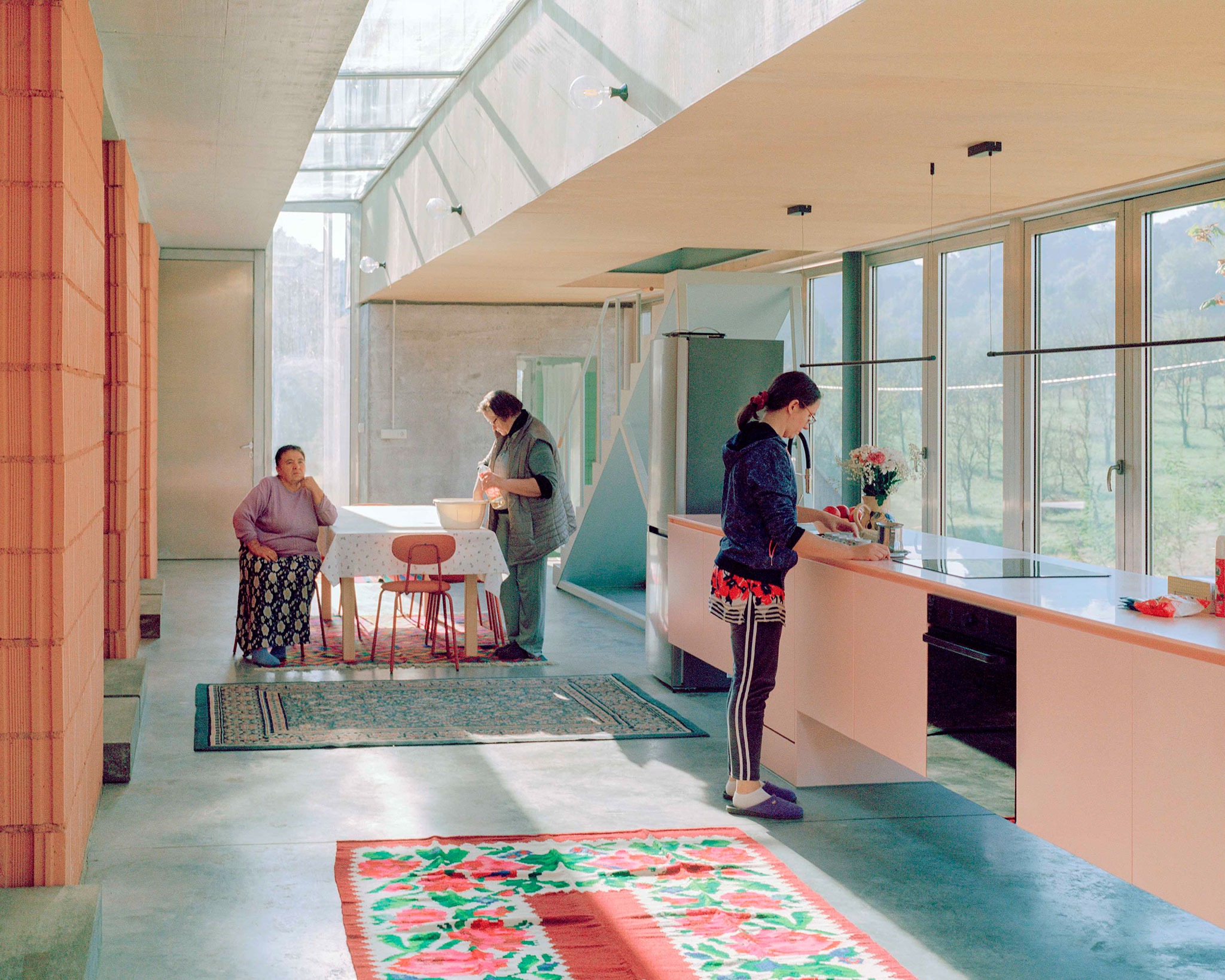
Here, design serves as a tool for social change, creating spaces that respond to those in vital need. The value of this project derives from a design process that is open, highly collaborative, and purpose-driven. The architecture facilitates cooperative exchange and integrates artistic knowledge across disciplines. This approach surpasses the refinement of a particular aesthetic, to one that cultivates an aesthetic of discovery. The structure is designed to encourage residents to inhabit and adapt the space. This acknowledgment of individual needs is coupled with mutual support and acceptance of each woman's personal history, making this a place they can call home.
Working in close collaboration with TEN, landscape architect Daniel Ganz integrated the building with its surroundings by planting trees, tending to the grounds, and developing a layout for a productive food garden. Artist Shirana Shahbazi worked with material and color to transform the facade and interior into a dynamic visual display, a tapestry that continuously changes in appearance. The coloring and arrangement of the facade panels were made on-site and in a nearby car painter's workshop, transforming a typical vehicle repair service into a kind of art studio. Working with repetition of domestic elements and combining them with design efforts, the project aimed to create a new type of household.

The large facade with twenty doors that can be opened towards the road make the house approachable and inviting. When fully opened, these doors create a 25-meter-long threshold that brings the landscape into the interior. These features create improbable juxtapositions, advocating for the visibility of the new home for its inhabitants—a place that celebrates them and that they can celebrate. The facade design gives the house an unexpected, non-residential character, offering a warm welcome to all.
The women, whose length of stay is determined entirely by their own choice, are encouraged to cultivate the adjacent agricultural plot, transforming the land into a productive space that reinforces their independence. With administrative support from a trained caregiver, the women transform the House for Five Women into a vibrant, living community that evolves and thrives with each new chapter. The completion of the house marks not the end of the project but the beginning of its cohabitation. The project team remains actively involved through the NGO Naš Izvor which is responsible for the building’s maintenance, ensuring that it continues to adapt to the needs of its residents.
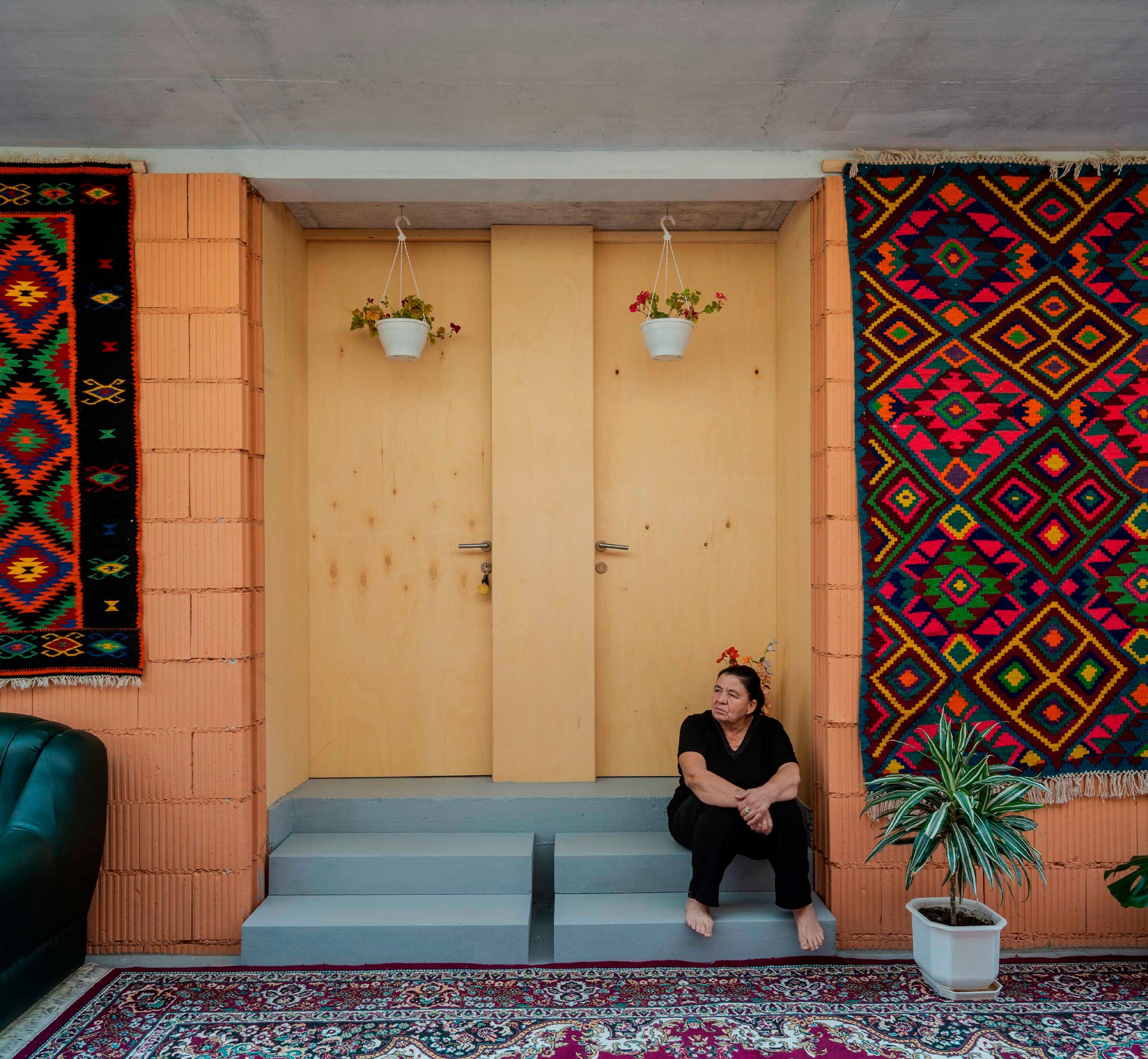
The project challenges conventional expectations of control, completion, and utilitarianism. Instead, it embraces raw space as a platform for growth, adaptation, and reconfiguration. By integrating diverse perspectives, the design transforms architecture into a medium for connection and interdependence, creating a living framework that evolves with its inhabitants.
The layout supports both privacy and shared experiences; on the ground floor there are private rooms, a common living area and utility rooms. Each of the five private rooms is generous, equal in size, and similarly oriented. They are equipped with cabinetry and self-contained kitchenettes to ensure independence. The presence of ten double doors along the south-facing wall transforms the typical room access into an interior street, fostering connection.
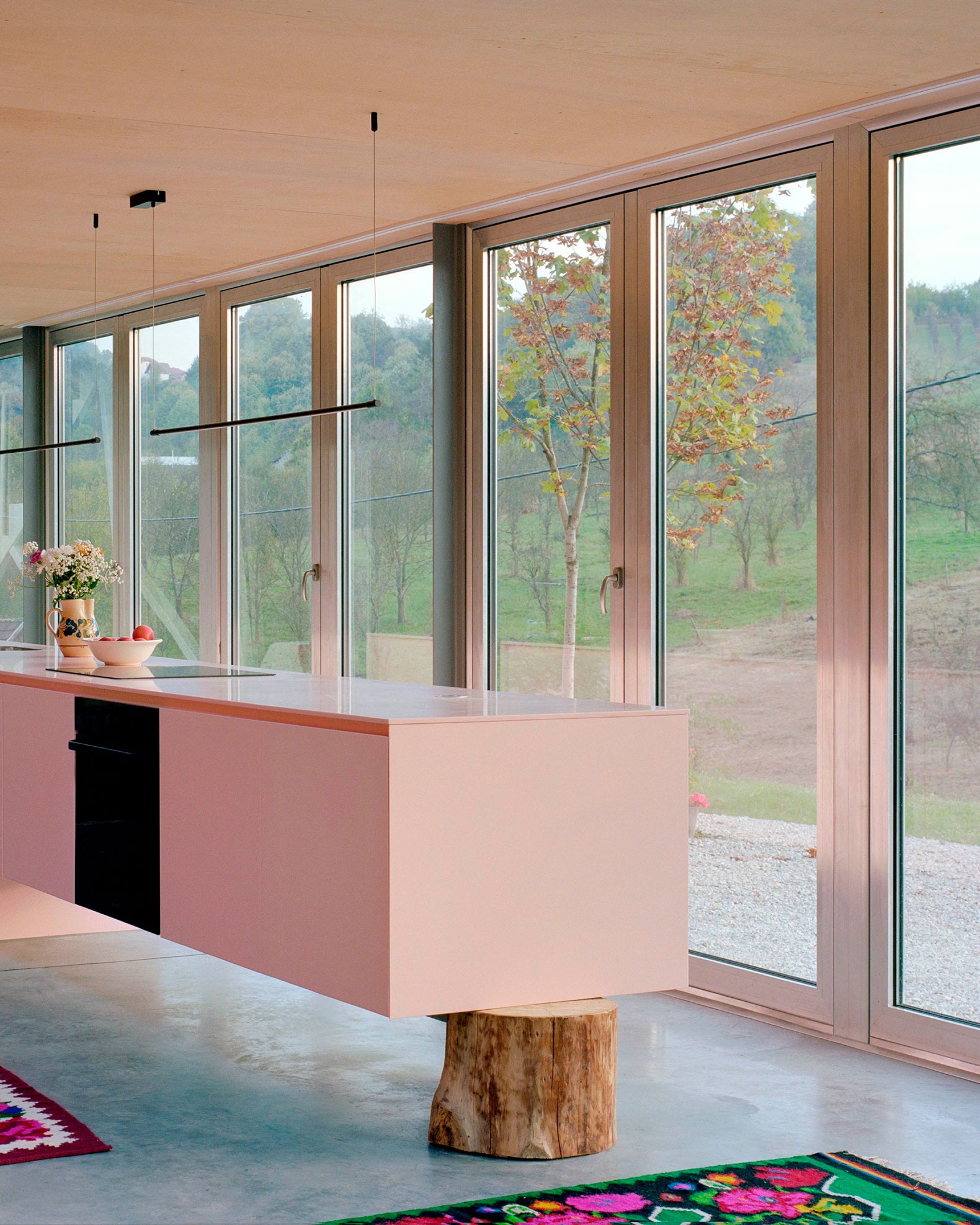
At approximately 90m2, the common area is larger than what individuals could afford independently, requires shared participation, reinforcing the idea of collective living. This space expands the concept of traditional south-facing porch areas, providing shade in the summer and creating depth. This everyday room type, situated between inside and outside, functions as a space for food processing and social interaction. Open on three sides and featuring a skylight that separates the private zones from the expansive communal areas, it serves as a kitchen, welcome area, workspace, and living room. The two utility rooms on the ground are built from concrete and include large restrooms, connected to the landscape via small doors, providing direct access for gardening.
Above the common area lies a 26-meter-long multifunctional room, inspired by the traditional typology of pastoral storage. Constructed as a space truss and clad with metal panels on the exterior and timber on the interior, this structure is both prominent and secluded as needed. This versatile room accommodates various seasonal activities, from food storage to hosting additional residents. It is openable solely through a series of movable panels facing north.
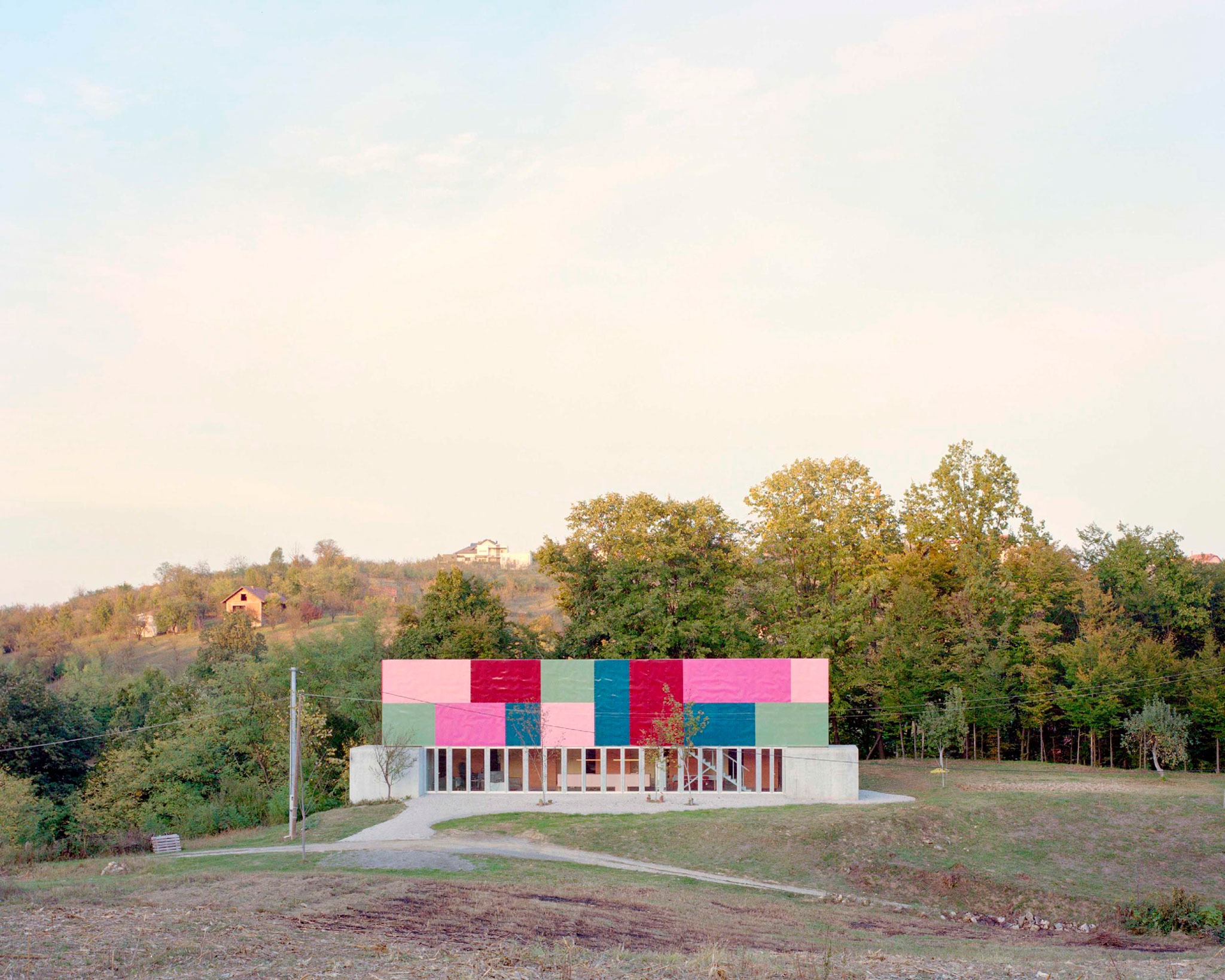
The surfaces are robust, straightforward, and welcoming, reflecting the resilience and potential of the women who live there. This reflects an architectural approach focused on radically rethinking comfort. The unconventional dimensions of the shared areas ensure that the space is used according to the mutual aspirations of, or at least respecting the consent of, all residents. Common room sizes expand the typical housing standards to a more generous model, suitable for collective living. By working with sufficient surface area and materials while increasing the space available, the design creates a sense of grandeur, highlighting the potential for a new type of household in the area.
The design process of the House for Five Women was a reflective, critical, and inventive search characterised by shared pleasure in the unexpected. Such creative partnerships have the potential to bridge isolated domains of knowledge, build common ground, soften ideological extremes and bring people together around shared values. Design can demonstrate its value in fostering inter-subjectivity and cultural resilience that prioritize social impact and collective well-being. This embodies a new kind of design institute and this is the field where TEN operates. Text description by the architects.
